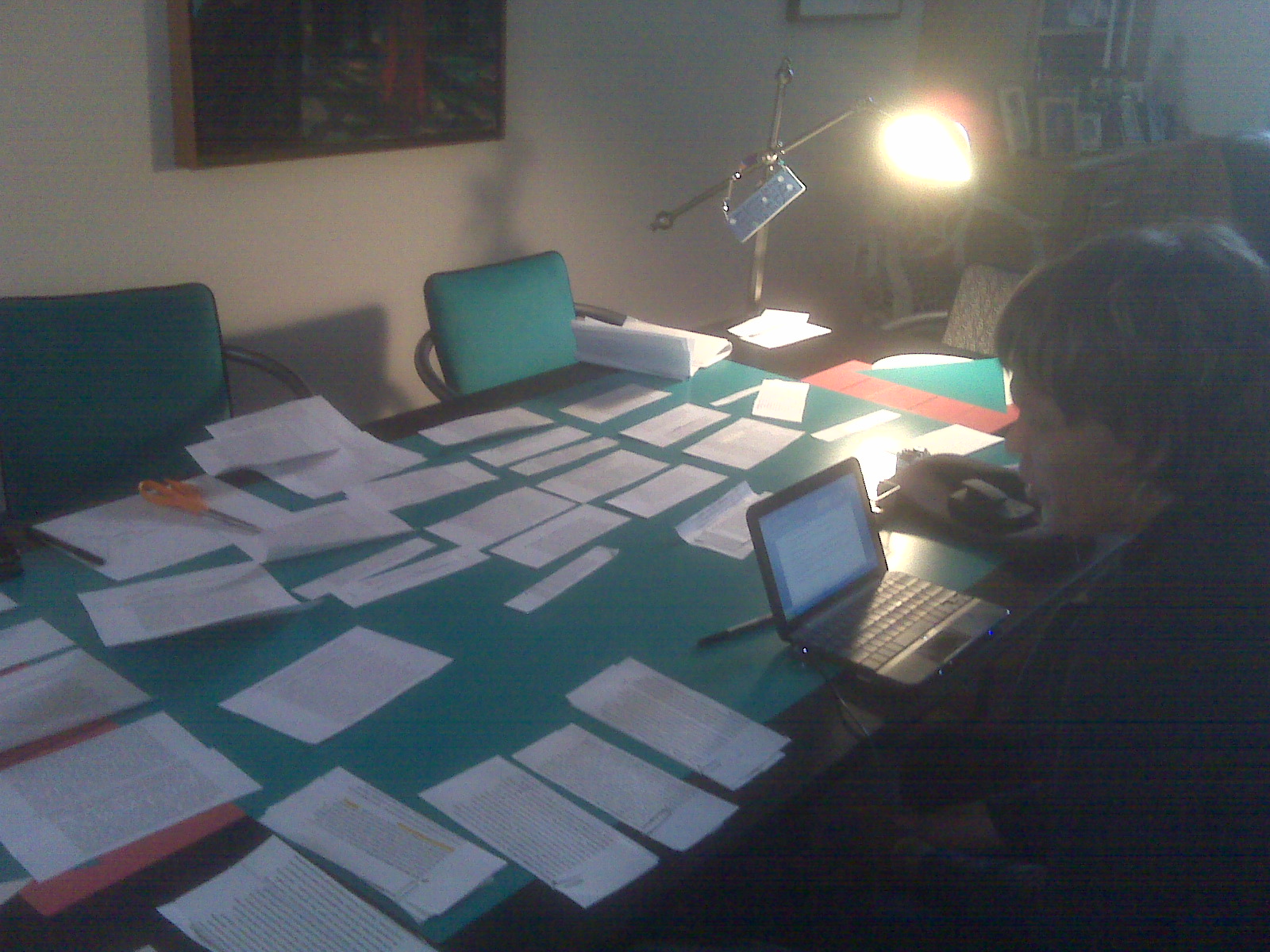We’ve curated our best editorial secrets and industry insights into a series of articles. They range from getting started through staying on track and grasping the publishing business. Put those fuzzy slippers on your feet, pull up a cushy armchair, and enjoy.
Cut Up Your Scenes
Finish Your Book in Three Drafts (3D), the third book in the Book Architecture trilogy, came accompanied by a wealth of writing know-how in the form of 9 bonus PDFs. We are opening up the vault for the first time and publishing them here: one blog at a time. Behold, PDF #2.
Before you get started here you may want to watch THIS VIDEO. When I tour the country, I usually ask the audience to save all questions until the end, but this is one subject where people can’t seem to control themselves.
“You mean, you actually print the manuscript out and cut it up?”
“Is that every scene in the whole book right there?”
“I don’t have a table big enough for that!”
So I wanted to show you some real people.

This is Liz; Liz is doing it. There are her orange scissors. Closest to her in the front row are some meaty scenes, where multiple paragraphs and pages are paper-clipped together. And there, in the center of her table, are those scraps of paper she has been dragging around from draft to draft that probably belong in this pile:

We call that the detritus pile, because that is one of the nastiest words for “trash.”
We heard Biz talk about how terrifying it is to toss something out: “What if the best line ever written by a human being is somehow stuck under that pile?” Well, as Ro$hi tells Biz in one of the deleted scenes, “We don’t have anything to fear, because your creativity is inexhaustible.” Besides, forward motion cures many ills.
Here’s another example of a work-in-progress:

After Wendy cut up her scenes, she was able to move her individual scene names around with more confidence. In the foreground you can see her scene list of the good, bad, forgotten, and missing. And in the background is her outline, the one she was able to put together after her messy draft—as opposed to those complex outlines done before any work has begun that I have rarely seen truly work.
And eventually it looks like this:

This is the end of Sondra’s process in preparation for her method draft. Her scenes have been grouped and rearranged, and some have been dropped. The Post-it notes on top of each scene contain instructions that she wanted to remind herself about when she rewrote each scene.
Sondra was writing a memoir about her sister, who died of cancer. When Sondra and I met for the final time to put all of her scenes together, we convened in a room at Grub Street, Boston’s incredible writing center. There was nothing in the room at all except this one book, a poetry collection from a college writing program whose front cover simply read, “MARGIE”— which was Sondra’s sister’s name. I think we both felt at liberty to follow our instincts that day, to trust ourselves to envision the structure a little more deeply.
